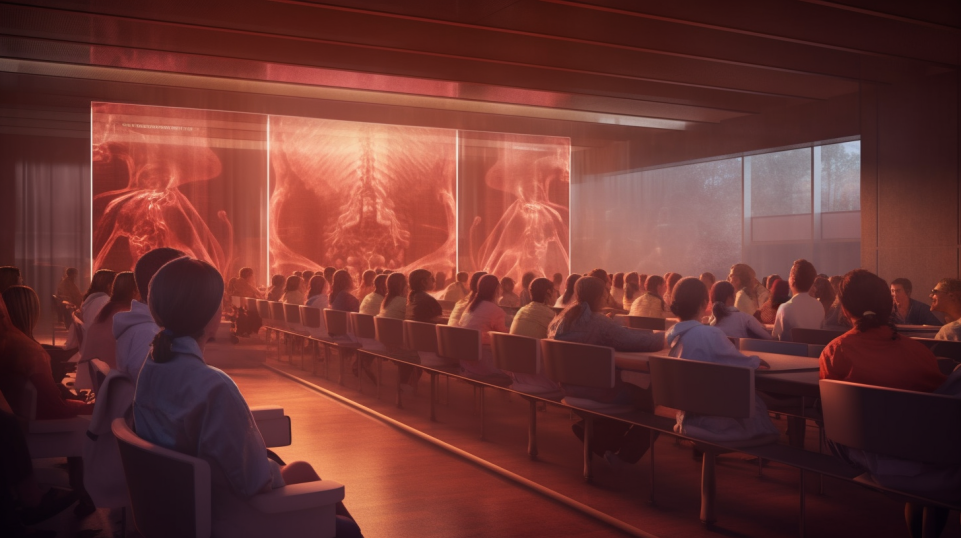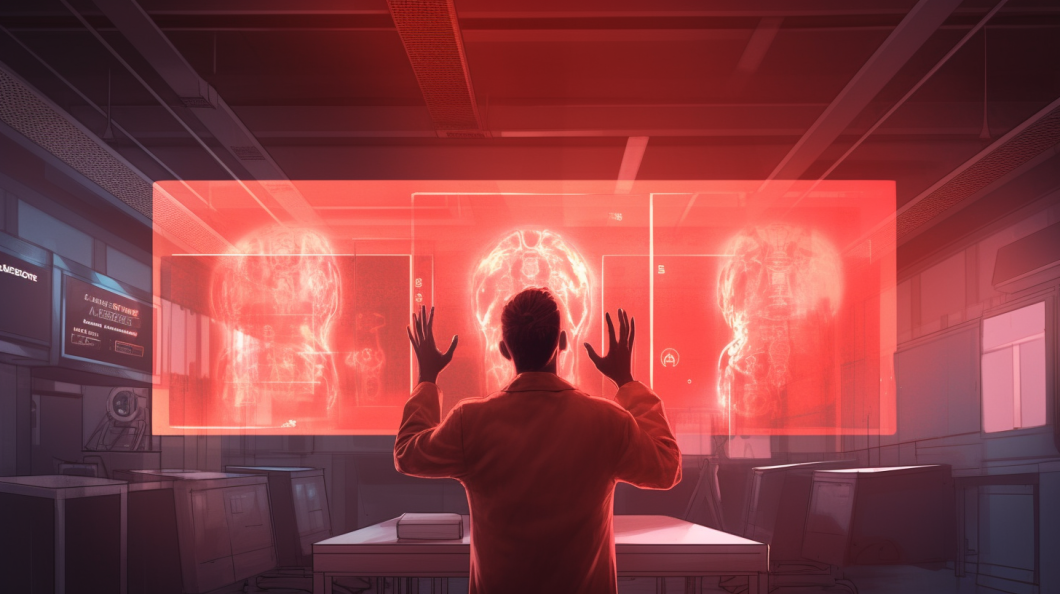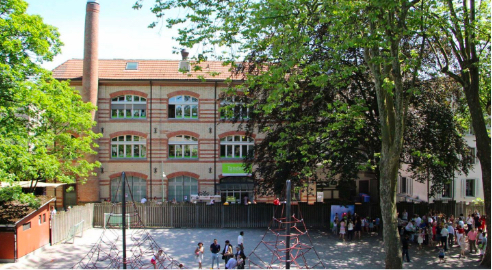Radiologists play a vital role in the healthcare industry, providing critical insights into the diagnosis and treatment of various medical conditions. As a bridge between advanced technology and patient care, radiologists interpret medical images to aid other healthcare professionals in understanding the underlying causes of a patient’s health concern. This behind-the-scenes role is essential in the healthcare setting and offers a rewarding career path for those intrigued by medicine and technology.
Choosing a career in radiology means embarking on a journey of lifelong learning, mastering the art and science of medical imaging, and making impactful contributions to patient care. If you find yourself drawn toward this unique blend of science, technology, and patient interaction, then a career in radiology may be right for you.
In this blog, we will walk you through the steps to becoming a radiologist, from the initial educational requirements to the eventual board certification process. We will also provide insights into the skills required for success in this field and the various career paths available to radiologists. Whether you’re a high school student contemplating a career in medicine or a medical student deciding on a specialty, this guide will provide valuable insights to help you navigate your path to becoming a radiologist.
Understanding the Basics
Radiology, at its core, is the science of diagnosing and treating diseases using medical imaging techniques. It plays a vital role in healthcare, allowing doctors to visualize the internal structures and workings of the human body. In essence, radiologists are the ‘medical detectives’ that solve the puzzle of a patient’s symptoms using images from X-rays, CT scans, MRIs, ultrasounds, and other advanced imaging technologies.
There are two main types of radiologists: Diagnostic Radiologists and Interventional Radiologists.
- Diagnostic Radiologists are medical doctors who specialize in diagnosing diseases using imaging techniques. They interpret images obtained by various methods such as X-rays, CT scans, MRIs, ultrasounds, and mammograms. The images they analyze help determine whether a disease or condition exists and how it’s progressing.
- Interventional Radiologists not only diagnose conditions but also perform minimally invasive procedures using imaging for guidance. These could be treatments for various conditions such as tumors, blocked arteries, or uterine fibroids. This branch of radiology often provides an alternative to open surgery, leading to less pain and quicker recovery times for patients.
In their day-to-day duties, radiologists review and interpret medical images, consult with other physicians, perform procedures (if they’re interventional radiologists), and ensure the overall quality of imaging services. Also, they play a crucial role in patient care by providing a diagnosis or monitoring treatment based on the results of imaging studies.
Understanding these basics sets the foundation for the subsequent steps required to become a radiologist. In the following sections, we will delve into the educational journey and skills necessary to excel in this dynamic and impactful field.
Educational Requirements
The path to becoming a radiologist is a lengthy one, requiring a significant commitment to education and training. Here are the primary steps involved:
High School Preparation and Undergraduate Degree
- High School: If you’re considering a career in radiology, it’s crucial to lay a strong foundation in science and math subjects while still in high school. Take advanced classes in biology, chemistry, physics, and mathematics, as these will be essential to your further studies.
- Undergraduate Degree: Most aspiring radiologists start by earning an undergraduate degree in a pre-medical program or a science-related field, such as biology, chemistry, or physics. This usually involves four years of study and includes pre-med requirements like biology, chemistry, organic chemistry, physics, and calculus.
Medical School
- Admission: Gaining admission to medical school is a competitive process. It typically involves submitting an application through the American Medical College Application Service (AMCAS), taking the Medical College Admission Test (MCAT), and undergoing interviews.
- Medical Studies: Medical school lasts four years, with the first two years mainly comprising classroom and lab instruction and the last two offering clinical experiences in various areas of medicine. Upon completion, you will earn your Medical Doctor (MD) or Doctor of Osteopathic Medicine (DO) degree.
Radiology Residency
- Application: After medical school, you will apply for a radiology residency through the National Resident Matching Program (NRMP). This is another competitive process, with programs looking at grades, letters of recommendation, and performance during clinical rotations.
- Residency Training: A radiology residency typically lasts four years. Here, you’ll gain hands-on experience under the supervision of experienced radiologists. You’ll learn to interpret medical images and understand the nuances of various imaging techniques.
Optional Fellowship
- Sub-specialties: If you want to further specialize in a particular area of radiology, such as neuroradiology, pediatric radiology, or interventional radiology, you can undertake a fellowship program post-residency. This can last one to two years, depending on the specialty.
- Fellowship Training: During a fellowship, you’ll get intensive, focused training in your chosen sub-specialty. This will prepare you to handle more complex cases in your area of interest.
In the next part, we’ll explore the licensing and certification process, which legitimizes your status as a professional radiologist. We’ll also delve into the skills needed to become successful in this field.
Licensing and Certification
Once you’ve completed your education and residency training, the next crucial steps involve acquiring your license and becoming board certified.
Licensing
All doctors, including radiologists, must be licensed to practice medicine. The process usually involves passing a two-step examination – the United States Medical Licensing Examination (USMLE) for MDs, or the Comprehensive Osteopathic Medical Licensing Examination (COMLEX-USA) for DOs. The specifics of licensing can vary by state, so it’s important to check with your state’s medical board for exact requirements.
Board Certification
After earning a license, many radiologists choose to become board certified. This isn’t a requirement to practice radiology, but it demonstrates expertise in the field and can make you more attractive to potential employers. To become board certified, you’ll need to pass the American Board of Radiology (ABR) certification exam. The exam tests your knowledge of radiology and your ability to apply that knowledge in practice.
Continuing Medical Education (CME)
 Medicine, and especially radiology, is a rapidly evolving field. To keep their skills and knowledge up to date, radiologists must meet CME requirements. This often involves attending workshops, seminars, or classes and/or reading new research in medical and radiology journals.
Medicine, and especially radiology, is a rapidly evolving field. To keep their skills and knowledge up to date, radiologists must meet CME requirements. This often involves attending workshops, seminars, or classes and/or reading new research in medical and radiology journals.
In the next section, we will explore the skills you need to cultivate to excel in this field beyond just educational achievements and professional certifications. After all, successful radiologists marry technical expertise with a host of interpersonal and soft skills. Stay tuned!
Skills Needed to Become a Successful Radiologist
Radiology is a field that requires a unique blend of skills. Beyond the foundational medical knowledge and technical proficiency in imaging technology, radiologists also need a set of soft skills to excel in their roles.
Hard Skills
Radiologists must have an intricate understanding of anatomy, physiology, and pathology, as well as a strong knowledge of radiological technology and procedures. This includes:
- Technical knowledge: Proficiency in operating and interpreting various imaging modalities like X-rays, CT scans, MRIs, ultrasounds, etc.
- Interpretation skills: Ability to accurately analyze and interpret the images generated by these technologies.
Soft Skills
Besides technical abilities, radiologists also need a range of soft skills, including:
- Communication: This is crucial, as radiologists often need to explain complex medical information to patients, their families, and other healthcare professionals in an understandable manner.
- Attention to detail: Given that small details in an image can lead to major diagnostic breakthroughs, having a keen eye for detail is crucial in radiology.
- Problem-solving: Radiologists often encounter complex cases that require innovative thinking and problem-solving skills.
- Empathy: Although much of a radiologist’s work is behind the scenes, they still interact with patients who may be scared or anxious. Therefore, being empathetic and understanding is key.
Staying Up-to-Date with Advances
As a field at the intersection of medicine and technology, radiology is always evolving. Successful radiologists stay current with the latest developments in imaging technology, diagnostic techniques, and research findings.
In our final part, we will discuss the potential career paths and opportunities available in the field of radiology and how this profession can open a plethora of doors for you in the healthcare sector.
Potential Career Paths and Opportunities in Radiology
Radiology, with its diverse subspecialties and applications, opens the door to a variety of career paths. Here are a few options:
Hospital-based Radiologist
Many radiologists work in hospital settings, where they are integral members of the healthcare team. Here, they interpret images from the hospital’s patients, perform interventional procedures if specialized in that area, and consult with other doctors on diagnoses and treatment plans.
Private Practice
Some radiologists work in private practice, either alone or as part of a group. These radiologists might have a contract with one or more hospitals or clinics to read their images, or they may see patients in their own offices, especially if they’re interventional radiologists.
Academia and Research
Radiologists with a passion for teaching and research may find a fulfilling career in academia. These professionals teach medical students and residents, conduct research, and contribute to the scientific advancement of radiology.
Tele-radiology
Advances in technology have made tele-radiology a viable career path. Tele-radiologists work remotely, interpreting images sent to them digitally. This offers flexibility and the opportunity to serve hospitals or clinics that might not have a full-time radiologist.
While each of these paths has its unique advantages and challenges, they all offer the opportunity to make meaningful contributions to patient care and the field of medicine. As we wrap up this guide, let’s summarize what we’ve covered and look toward the exciting future of a career in radiology.
Conclusion
Becoming a radiologist is a long and rewarding journey, full of learning opportunities and challenges that push you to continually grow as a professional. It begins with a strong foundation in science and mathematics, continues through rigorous medical and radiological training, and culminates in a rewarding career that blends technology with patient care.
This profession requires a unique blend of skills, from the technical ability to operate and interpret sophisticated imaging modalities to the softer skills of communication, attention to detail, and empathy. Moreover, the rapid evolution of this field mandates a commitment to lifelong learning to stay abreast of the latest developments in imaging technology and diagnostic techniques.
Whether you find yourself working in a hospital, private practice, academic setting, or as a tele-radiologist, you’ll be part of a dynamic field that’s integral to the broader healthcare industry. You’ll have the satisfaction of knowing that your work directly contributes to improving patient outcomes, solving complex medical puzzles, and advancing our understanding of the human body.
In conclusion, radiology is a challenging but highly fulfilling career path. If you have a love for medicine and technology and enjoy problem-solving, this could be the perfect field for you. It’s a profession that allows you to make a significant impact on patient care and, indeed, people’s lives.
Frequently Asked Questions (FAQs)
In this section, we address some commonly asked questions about becoming a radiologist.
Q1: How long does it take to become a radiologist?
A: The journey to becoming a radiologist is typically around 13-15 years after high school. This includes 4 years for an undergraduate degree, 4 years of medical school, 4-5 years of residency, and potentially an additional 1-2 years for a fellowship if you choose to specialize further.
Q2: Is radiology a safe profession?
A: Yes, radiology is a safe profession. Although radiologists work with radiation, strict safety guidelines and protective measures are in place to ensure minimal exposure.
Q3: What is the job outlook for radiologists?
A: According to the U.S. Bureau of Labor Statistics, the job outlook for physicians and surgeons, which includes radiologists, is positive, with a growth rate of about 6 percent from 2021 to 2031, about as fast as the average for all occupations.
Q4: Do radiologists have a good work-life balance?
A: Work-life balance can vary greatly depending on the specific job. Some radiologists may have demanding schedules, especially those working in hospitals. However, certain career paths within radiology, such as tele-radiology, can offer more flexibility.
Q5: What is the difference between a radiologist and a radiologic technologist?
A: A radiologist is a medical doctor who interprets medical images, provides diagnoses, and, in the case of interventional radiologists, performs procedures. A radiologic technologist, on the other hand, is a healthcare professional who specializes in the imaging process itself, operating equipment like X-ray machines and CT scanners to capture images for the radiologist to interpret.
Should you have any other questions about the field of radiology or the process of becoming a radiologist, feel free to reach out. The road to becoming a radiologist may be challenging, but it’s undoubtedly rewarding, filled with opportunities to make significant contributions to patient care and the broader field of medicine.


